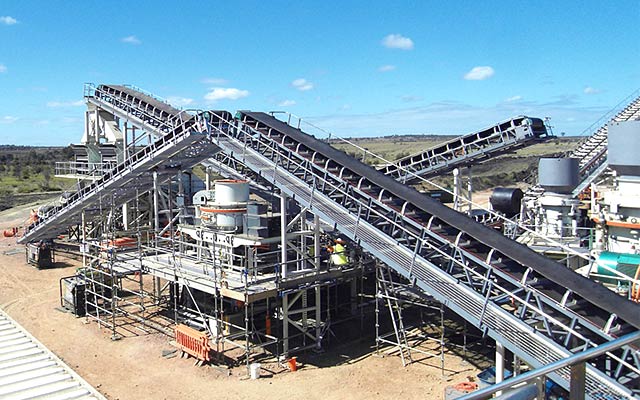Limestone is a sedimentary rock composed primarily of calcium carbonate (CaCO3) in the form of the mineral calcite. It is a valuable resource used in a variety of industries, including construction, agriculture, and chemical manufacturing. Limestone processing involves several methods and equipment, depending on the desired end product and the characteristics of the limestone.

- Crushing and Grinding: The first step in limestone processing is crushing the limestone rock into smaller pieces. This can be done using a variety of crushing equipment, such as jaw crushers, gyratory crushers, cone crushers, impact crushers, and hammer crushers. After crushing, the limestone is then ground using a mill to create a powder.
- Calcination: Calcination is the process of heating limestone to high temperatures in order to change its chemical composition. This is typically done in a rotary kiln, where the limestone is heated to a temperature of around 900-1000°C. This process causes the limestone to release carbon dioxide (CO2), leaving behind calcium oxide (CaO), also known as quicklime. Quicklime is an important industrial chemical used in the production of steel, paper, and many other products.
- Hydration: Hydration is the process of combining quicklime with water to create hydrated lime (Ca(OH)2). Hydrated lime is commonly used in agriculture, water treatment, and construction. The hydration process involves adding water to the quicklime, which causes a chemical reaction that produces heat and a paste-like substance.
- Pulverization: Pulverization is the process of grinding quicklime or hydrated lime into a fine powder. This is typically done using a ball mill, which is a rotating drum filled with steel balls that crush and grind the lime into a fine powder. The resulting powder can be used as a soil amendment, in industrial applications, or as a chemical feedstock.
- Flue Gas Desulfurization: Flue gas desulfurization (FGD) is a process used to remove sulfur dioxide (SO2) from flue gases emitted by power plants and other industrial facilities. This is typically done using a wet scrubber, which sprays a mixture of limestone and water into the flue gas stream. The SO2 reacts with the limestone to form calcium sulfite (CaSO3), which is then oxidized to form gypsum (CaSO4·2H2O). Gypsum is a valuable product used in construction, agriculture, and other industries.
In addition to these methods, there are several pieces of equipment commonly used in limestone processing. These include:
- Crushers: As mentioned earlier, crushers are used to break down large pieces of limestone into smaller sizes. The type of crusher used depends on the desired end product, as well as the characteristics of the limestone.
- Mills: Mills are used to grind limestone into a fine powder. The type of mill used depends on the desired end product, as well as the characteristics of the limestone.
- Kilns: Kilns are used for calcination, which involves heating limestone to high temperatures to change its chemical composition. Rotary kilns are commonly used for this purpose.
- Mixers: Mixers are used to combine limestone with other materials, such as water or other chemicals, to create a desired product.
- Scrubbers: Scrubbers are used in the FGD process to remove SO2 from flue gases emitted by power plants and other industrial facilities.
